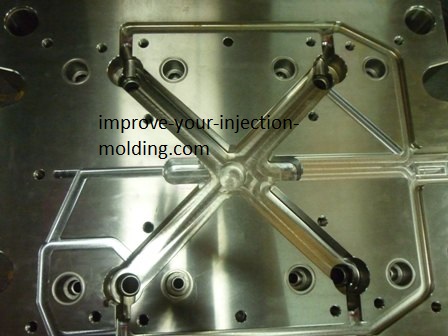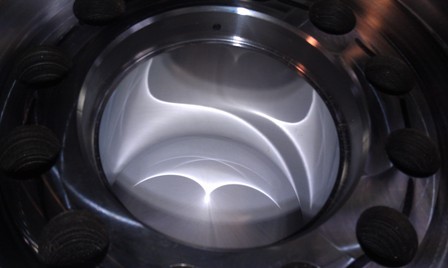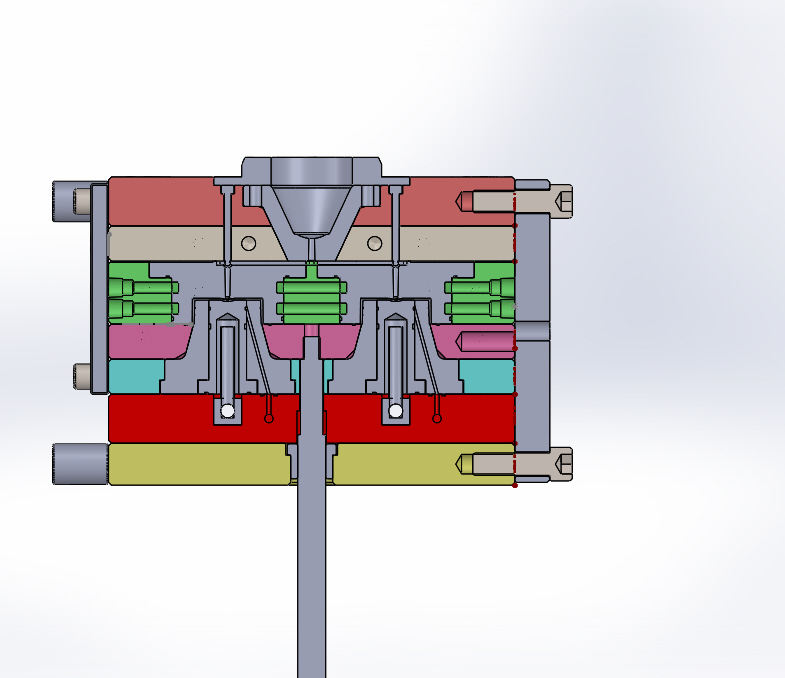- Home
- Lean Principles
- Machine Selection
- Mold Design
- Mold Interlocking
- Mold Making
- Plastic Material Technology
- Molding Process
- Plastic News
- What's New
- Privacy Policy
- Disclaimer
- Site Map
- Poll
- Polishing
- 3D Rapid Prototyping
- Molding Companies
- Contact Us
- Proven Thinwall Packaging Mold Designs For Sale
- MOLD WEIGHT CALCULATOR
- HOT RUNNER VERSUS COLD RUNNER
Corrosion Resistant Technology For Plastic Injection Molds

Having corrosion resistant injection molds is vital to achieving optimum production rates.
Maintaining corrosion free molds should be an important part of any mold maintenance program.
There are several commercially available corrosion resistant processes used on injection molds. They can significantly reduce the corrosive effects of water and plastics.
Which technique should be used?
I am glad you asked.
The following factors should be taken into consideration when deciding:
- Process cost
- Mold component material and size
- Environmental conditions such as high humidity
- Plastic material being moulded
- Future mould maintenance requirements such as welding due to damage or anticipated part design changes
The different types of corrosion resistant processes can be grouped into 3.
1. Heat Treatment

When it comes to corrosion resistant tool steels Stavax stainless steel (DIN No. 1.2083) provides the best result. When through hardened, Stavax is corrosion resistant and is designed to be used for core and cavity inserts in injection molding tools.
Ramax (DIN No. 1.2085) is another grade of stainless steel which provides excellent corrosion resistance and is designed to be used for mould bolster plates.
But what can be done with existing injection molds made from other tool steels?
There are a number of options.
Nitriding
Nitriding is another option but can only be applied to some tool steels. These include the most commonly used steels P20, H13, D2, S7, 4130 and 4140. These steels have the correct alloying elements to allow the nitriding process to form a hard case providing good corrosion resistance.
An additional benefit of a hard case is that it provides excellent wear resistance for sliding mold components.
Another advantage of nitriding is that it can be applied to finished mold components without the need for post nitriding machining.
The disadvantage of nitriding is that welding (if not done properly) can reduce the quality of the steel properties and result in mould failure.
Another disadvantage is in identifying nitriding steels in second hand moulds. Attempting to nitride a non-nitridable steel will not damage it but it will probably reduce its hardness level making it weaker and reducing its life.
However, if nitriding doesn’t work there are plating and coating process options available.
2. Plating
Hard Chrome
A thin coating of hard chrome plating will give excellent corrosion protection and can be applied to most tool steels including, P20, H13 and 4140.
Electroless Nickel
A thin coating of hard nickel plating will give excellent corrosion protection and can be applied to most tool steels including, P20, H13 and 4140.
One of the main advantages of electroless nickel plating is that it takes place in a bath so the plating will cover the entire surface area of the mold component including internal water cooling channels. This makes mould maintenance so much easier because it slows down the calcium build up inside the channel and prolongs cooling efficiency and cycle time.
The plating can be as thin as 0.005mm (5 microns) and will be of uniform thickness across the entire mold component. Such a thin coating means that the size of the mold component changes by just a small amount and in most cases will not require machining to reinstate size tolerances.
When machining is required the grinding process will easily do the job.
Electroless nickel plate is commonly used on P20 bolster plates in injection moulds as it is a cheaper alternative to Ramax stainless steel.
Electroless Nickel Teflon
This technique will provide a reasonable level of corrosion resistance but shouldn’t be used in place of electroless nickel unless a low coefficient of friction is also required. A low coefficient of friction can aid in improving plastic part ejection off a mould core.
Hard Anodising (aluminium)
Some grades of aluminium can be hard anodized which will provide an excellent degree of corrosion resistance.
3. Coatings
Dry Film Teflon Spray
Comes in a self spray aerosol can. It can be sprayed onto outside surfaces of a mold bolster to improve corrosion protection. It is non-toxic and easy to do.
Laser Cladding
This technique involves applying a metal or an alloy in its powder form to a mold component.
As well as providing good corrosion protection, this technique also gives a high level of wear resistance.
To find out more go to http://www.hardchrome.com.au/technologies/laser-cladding/
Additional Comments
Planning for corrosion protection during the mold design stage is the best way to guard against corrosion in the long term. Use of stainless steels and having good mould maintenance habits will ensure good quality plastic parts will be produced consistently over the life of the mould.
When Stavax stainless steel is not an option due to price restrictions, there are cheaper options available, which, in some cases can be just as effective in preventing corrosion in injection molding tools.
Return from Corrosion Resistant Technology to Plastic Injection Mould Making





